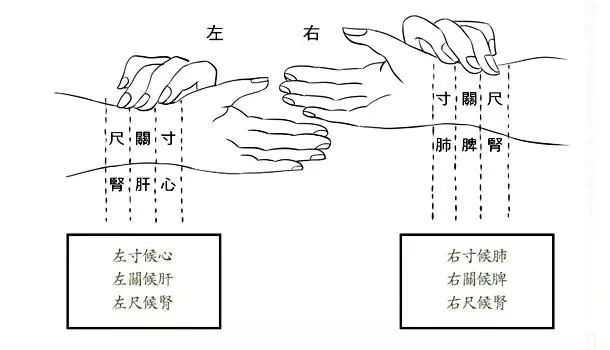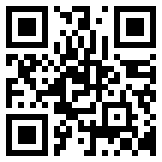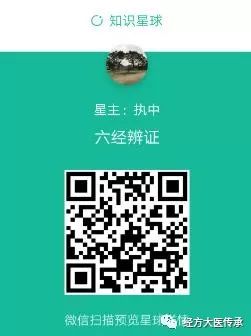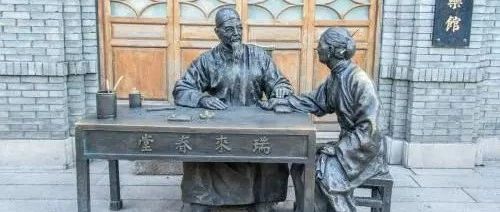Floating
Floating (fu) refers to a pulse that can be felt just beneath the skin’s surface; it is easily detected with light pressure. This indicates the initial invasion of cold pathogens into the Taiyang meridian, representing a superficial condition that can be resolved. However, treatment varies: if cold injures the nutritive qi (rong), resulting in no sweating and aversion to cold, use Ma Huang Tang (Ephedra Decoction); if wind injures the defensive qi (wei), resulting in sweating and aversion to wind, use Gui Zhi Tang (Cinnamon Twig Decoction). These conditions require different approaches.
If the floating pulse is tight and forceful, with no sweating and aversion to cold, accompanied by headache, stiffness in the neck and back, and fever, this indicates a superficial cold damage, and dispersing treatment is appropriate. In winter, use Ma Huang Tang, while in the other three seasons, use Qiang Huo Chong He Tang (Notopterygium Decoction). If there is thirst, add Shi Gao (Gypsum) and Zhi Mu (Anemarrhena); if there is no thirst, do not add these.
If the floating pulse is weak and soft, with sweating and aversion to wind, accompanied by headache, stiffness in the neck, and fever, this indicates a superficial wind damage. In winter, use Gui Zhi Tang, while in the other three seasons, use Jia Jian Chong He Tang (Modified Notopterygium Decoction). For abdominal pain, use Xiao Jian Zhong Tang (Minor Construct the Middle Decoction); if the pain is severe, use Gui Zhi Jia Da Huang Tang (Cinnamon Twig Decoction with Rhubarb).
 Middle
Middle
Middle (zhong) refers to a pulse that is felt beneath the skin, between the muscles, requiring moderate pressure to detect. This indicates a condition that is half superficial and half interior. There are also two types: the Shaoyang and Yangming meridians do not follow the superficial and deep patterns.
If the pulse is long and forceful, this indicates a Yangming condition, with symptoms of headache, pain around the eyes, dry nose, insomnia, and fever without sweating. Use Ge Gen Tang (Kudzu Decoction) or Jie Ji Tang (Release the Muscle Decoction). If there is thirst and sweating that does not resolve, or if there is thirst after sweating, use Bai Hu Tang (White Tiger Decoction) or add Ren Shen (Ginseng); if there is no sweating and no thirst, do not take these, as it is a major contraindication.
If the pulse is wiry and rapid, this indicates a Shaoyang condition, with symptoms of chest and rib pain, deafness, or alternating chills and fever with vomiting. Use Xiao Chai Hu Tang (Minor Bupleurum Decoction) with modifications as needed.
If both meridians are affected, the pulse will be wiry and long; in this case, add Ge Gen (Kudzu) and Shao Yao (Peony).
Sinking
Sinking (chen) refers to a pulse that requires heavy pressure to feel beneath the muscles, between the tendons and bones. This is known as a sinking pulse. There are also two types, with Yin and Yang, cold and heat, differentiated within the sinking pulse.
If the sinking pulse is forceful, it indicates Yang and heat; if it is weak, it indicates Yin and cold.
If the sinking pulse is rapid and forceful, it indicates the root of Yangming, with symptoms of superficial heat entering the interior, aversion to cold, and headache completely relieved, but feeling hot and wanting to uncover clothing, restlessness, dry mouth, and throat, with no bowel movement for five to six days. For mild cases, use Da Chai Hu Tang (Major Bupleurum Decoction); for severe cases, use San Cheng Qi Tang (Three-Ingredient Decoction).
If the sinking pulse is slow and weak, it indicates cold, with no external heat symptoms, no thirst, but aversion to wind and cold, or severe cold sensation on the face as if cut by a knife, or abdominal fullness and pain, diarrhea, clear urination, or pain in the lower abdomen, all indicating a Yin condition. For mild cases, use Li Zhong Tang (Regulate the Middle Decoction); for severe cases, use Si Ni Jiang Fu Tang (Four Reversal Ginger and Aconite Decoction).
Fill out the online consultation form:

Scan the QR code to participate in the online discussion:

Contact the author by scanning the QR code below to leave a message for online contact information.
This article represents the author’s personal views and does not reflect the views of this platform. For the usage and dosage of the formulas, please consult a professional physician.
END
We strive only to promote Traditional Chinese Medicine (TCM) and work towards its revival.Let’s learn together, progress together, and inherit the true principles of TCM formulas. Share knowledge, share joy, and embark on the path to health. Follow us and support the development of TCM.
Submission Email:[email protected] We look forward to your works and sharing.
If there are any copyright issues with published articles, please contact us immediately. Leave feedback in the public account or at the bottom of the article.
Long press the QR code to quickly follow us.


Please like, leave a message, and interact.↓↓↓↓↓↓↓↓

